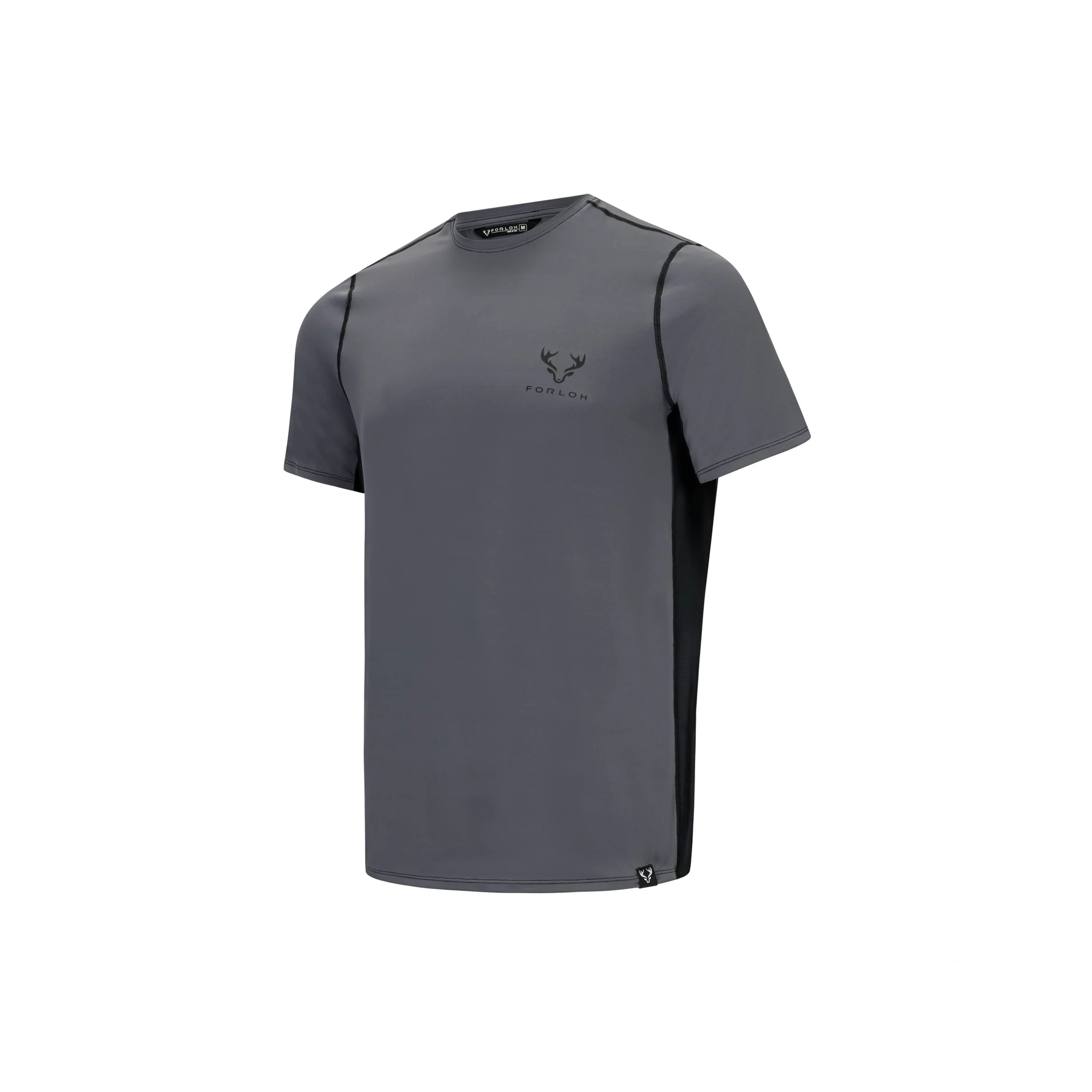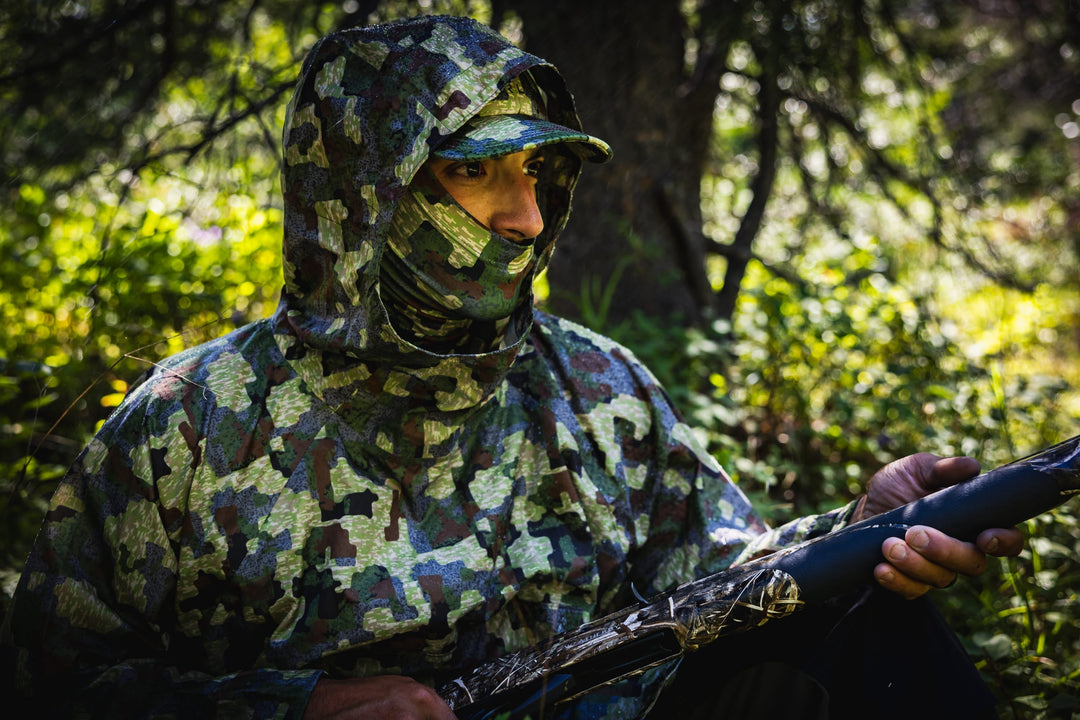After a long big-game season where the accumulated miles on my boots and loads on my pack have worn me down there is still the desire to remain immersed outdoors. This is ice fishing’s big entrance. I find myself looking forward to sitting in a warm hut and watching a rod while waiting for that small bump at the tip alerting me to the bite down below. And yet, so many of my buddies who will endure the negative temperatures and hours glassing for bulls will have nothing to do with sitting on ice and staring at a hole. It may be that I fail to inspire with my stories and encouragement to see the excitement of pulling a fish through ice, but allow me to present the evidence.
-By Everett Headley
Unlike its cousin fly fishing with its various line sizes, myriad fly choices, and the need to understand the rhythm to create a loop and present a fly so that a fish will be fooled into thinking dinner has been served, hard water fishing only requires an auger to drill the hole, a short rod with jig, and your ability to endure the cold needed to create ice. For around $30 (an ice auger and rod), your ice fishing career can be launched. As with any endeavor, gear and complexity can be added as the user is ambitious.
 Everett and his father holding rainbow trouts caught through the ice this winter.
Everett and his father holding rainbow trouts caught through the ice this winter.
Where to ice fish is not near a guarded secret like a September wallow frequented by elk. Generally anywhere there are fish in the summer, there will be fish in the winter. You’ll know you’re in the right place when you see Shanty-towns pop up. Courtesy would tell you to give space to fellow anglers while on the ice, but a couple dozen yards is sufficient. If you are close enough to hear your neighbors whooping because they landed one or moaning because they couldn’t land it, that is just fine. The community that develops on the ice in just a day or over the course of the season is unique to ice fishing. The occasional ask to borrow an auger or check-in on how the fish are biting is welcomed. Asking what lure they are using and the secret recipe in their bait box will quickly earn you a response akin to the water below the ice.
Once you have set up your impromptu shelter the simplicity of it all begins: Drop, Hook, Land, Repeat. How long it takes between each step depends almost entirely on the fish. The depth fish are feeding in the water column is a calculation based on how long the ice has been on, the clarity of the water, and other factors that are rarely revealed until you happen upon them. You will know it once discovered by the subtle and sometimes violent movement of the rod tip. This is where you will separate yourself from other anglers; the moment you take your eyes off your rod, inevitably you will get a bite. This is when your hookset skills will be tested. If the bite is light you will lose the fish, if the bite is hot you might lose the rod. That at-any-moment-it-could-happen anticipation is exactly the same when a turkey answers your cluck with a gobble or the wings of that flock being worked lock up: we all wait for that moment.

With your senses keen and reflexes ready your hooked-fish will run. Ice fishing reels are small with small amounts of line. The drag will scream like its counterpart in the Keys with a tarpon. The line will pop as it moves around the ice and you’ll wonder when it will go soft. Allow the fish to play itself on the rod and off the ice as much as possible. And when you bring it up through the ice, be quick to move it away from your hole. Fish making their way back from where they came can easily tow a rod behind it. All that’s left is to reset and wait for the next one.
Western Montana ice fishing is mainly trout and kokanee salmon. Some of our lakes have northern pike that are speared from large holes cut with chainsaws. Crossing the Continental Divide introduces perch and walleye and their white meat that fries up so nicely. Those anglers who are allowed to spear sturgeon have their own tales similar to Melville’s.
Each one of these species requires a different approach and presentation. Rainbow trout tend to prefer a stationery jig with a maggot. They will swim up to it and stare at the bait before bringing it in, ever so slightly moving the rod tip. Salmon move through the water much quicker and will dart back and forth around a bait before violently taking it. A small flasher with a jig trailer works well to bring them in and then give them something to strike.
Once I have pulled my sled onto the ice I will raise my hut and ignite the heater, drill a hole, and drop my hook. If you have talked someone into coming with you, it's likely you have done less than that. There are some anglers who will try to follow the fish around the water, but for the most part ice fishing is a stationary activity. The semi-permanent structures seen in the highly esteemed Grumpy Old Men film are popular in the north-central states where anglers will stay so long they have mail delivered. Other states require your shelter to be removed daily. Either way, the only other heavy lifting done is at the end of the day when you haul your catch home.
 The ice is a vivid backdrop for this rainbow trout.
The ice is a vivid backdrop for this rainbow trout.
I will often take a book with me during the slow times when the bite is off. When the Griz are playing I will hear the game from several places around me. To each his own. Ice fishing grants anglers moments of respite that need to be enjoyed.
There are other winter sports, but to some extent they all require being exposed to the cold. Ice fishing can be that same test of endurance, but it doesn’t have to be. The time spent on the ice can be enjoyed in relative comfort. Inbetween action, stories can be shared and challenges
The traditional 3-Fish Bet adds a small competition to our fishing. Usually a dollar or five is placed on who will catch the first fish, big fish, and most fish. We double the bet if someone happens to win all three on one fish, an incentive to keep fishing hard on days when bites are scarce.
A few seasons back, I added a camera to my setup. I learned more in just a few outings about how the fish react to my presentation than I had in all my previous years of fishing. The argument can be made for being traditional and minimalist in your approach to fishing, but it has been fascinating to see how each species reacts to the colder temperatures.
 A favorite recipe of the author is the Maple Syrup Glazed trout with rice and broccoli.
A favorite recipe of the author is the Maple Syrup Glazed trout with rice and broccoli.
A quick word on ice safety. Four inches is the widely accepted minimum thickness to safely walk on ice. I prefer six inches myself. Never trust any ice. I also recommend a suit that has flotation built in and convenience features for ice fishing. Each winter the instances where these suits have saved lives increase.
Shop FORLOH's Cold Weather Collection here.








